From owning a vineyard in Long Island to being one of the pioneers in the keg wine movement, Bruce Schneider may have one of the wine industry's most peripatetic careers. It should then be less of a surprise that a business trip to Germany in 2019 would lead to a side trip to explore his family roots in Ukraine and then eventually to becoming an importer of Ukrainian wine. Elijah's Fifth Cup, a kosher Cabernet Sauvignon made in western Ukraine, was born as an homage to his grandparents. In Judaism, Elijah's Cup is the fifth ceremonial cup of wine poured during the family seder dinner on Passover. It is left untouched in honor of Elijah, a prophet and miracle worker who ascended to heaven on a fiery chariot.
With the tragedy in Ukraine ongoing, the fate of Elijah's Fifth Cup remains uncertain. Hugo Gutman, the founder of Chateau Chizay, the winery that partners with Bruce Schneider, has started a GoFundMe campaign to fund food, shelter, and logistics support that the winery is supplying to hundreds of refugees that are flooding into the region. Here is the link: https://gofund.me/a241bcc0
Bruce Schneider talked to Grape Collective about the history of Ukrainian wine and his unique journey that led to him importing Elijah's Fifth Cup.
Grape Collective: Bruce, you've had a very interesting career in the wine business. How did you get started? Bruce Schneider: I got started through my family. I'm third generation in my family to be in the business. My grandfather was a bootlegger during Prohibition. Then my grandparents owned a wine shop after Prohibition in Port Elizabeth, New Jersey, and then my dad and my uncle got into the business through my grandfather. They were both working for import or distribution companies. So, in my childhood home, we regularly had winemakers coming through from all over the world. I would say it was mostly from Italy and France. And I just remember those stories of winemakers talking about where they were from and how the place they were from impacted the wines they were serving us at the table, and that stuck with me. And when I finished high school, I had the opportunity to do an apprenticeship in Burgundy that really made an impression on me. And so, I became the first one in my family to get involved with producing wine and importing wines.
Bruce Schneider: I got started through my family. I'm third generation in my family to be in the business. My grandfather was a bootlegger during Prohibition. Then my grandparents owned a wine shop after Prohibition in Port Elizabeth, New Jersey, and then my dad and my uncle got into the business through my grandfather. They were both working for import or distribution companies. So, in my childhood home, we regularly had winemakers coming through from all over the world. I would say it was mostly from Italy and France. And I just remember those stories of winemakers talking about where they were from and how the place they were from impacted the wines they were serving us at the table, and that stuck with me. And when I finished high school, I had the opportunity to do an apprenticeship in Burgundy that really made an impression on me. And so, I became the first one in my family to get involved with producing wine and importing wines.
And you've also owned a vineyard?
Yes, my wife and I started a vineyard out on the North Fork of Long Island. We started sort of as garagista producers in 1994, the brand was called Schneider Vineyards. From the beginning, we specialized in Cabernet Franc. And initially we bought grapes and had them produced at other production facilities. And then eventually, I went to Columbia Business School, and in my first year at the business school, I participated in a venture competition and I was the recipient of an investment from the venture fund. With that investment, we bought what was a potato farm in Riverhead, my wife and I, and we proceeded to plant 14 acres of vineyards over the next two or three years.
We had our first harvest in 2002 and produced wine there from 2002 through 2007. Eventually we sold the property and moved back to the city and sort of continued my journey more so with imported wines. But I've always continued to produce a little bit of Cabernet Franc, both on the North Fork, and then in 2011 started producing Cabernet Franc in the Finger Lakes as well. So, this year will be my 27th or 28th vintage of New York Cabernet Franc.
With the Gotham Project you're making keg wine, which most people aren't familiar with. How did you get involved in keg wine and what is the value proposition of wine in a keg?
So I have to give credit to my co-founder, Charles Bieler, who I started the Gotham Project with. He called me up one day. We had met maybe a year before and we hit it off and talked about doing some type of collaboration. And one day he called me up and he had walked out of an account and the account sort of said to him, "Well, you haven't really done anything new and innovative in packaging in a few years," kind of joking with him. And this guy said, "Well, why don't you try to figure out wine on tap because it's been around, but nobody's done it well." And I got this call from Charles and he said, "Hey, what do you think about putting wine in kegs?" And I said, "Sure, well, what do you have in mind?"
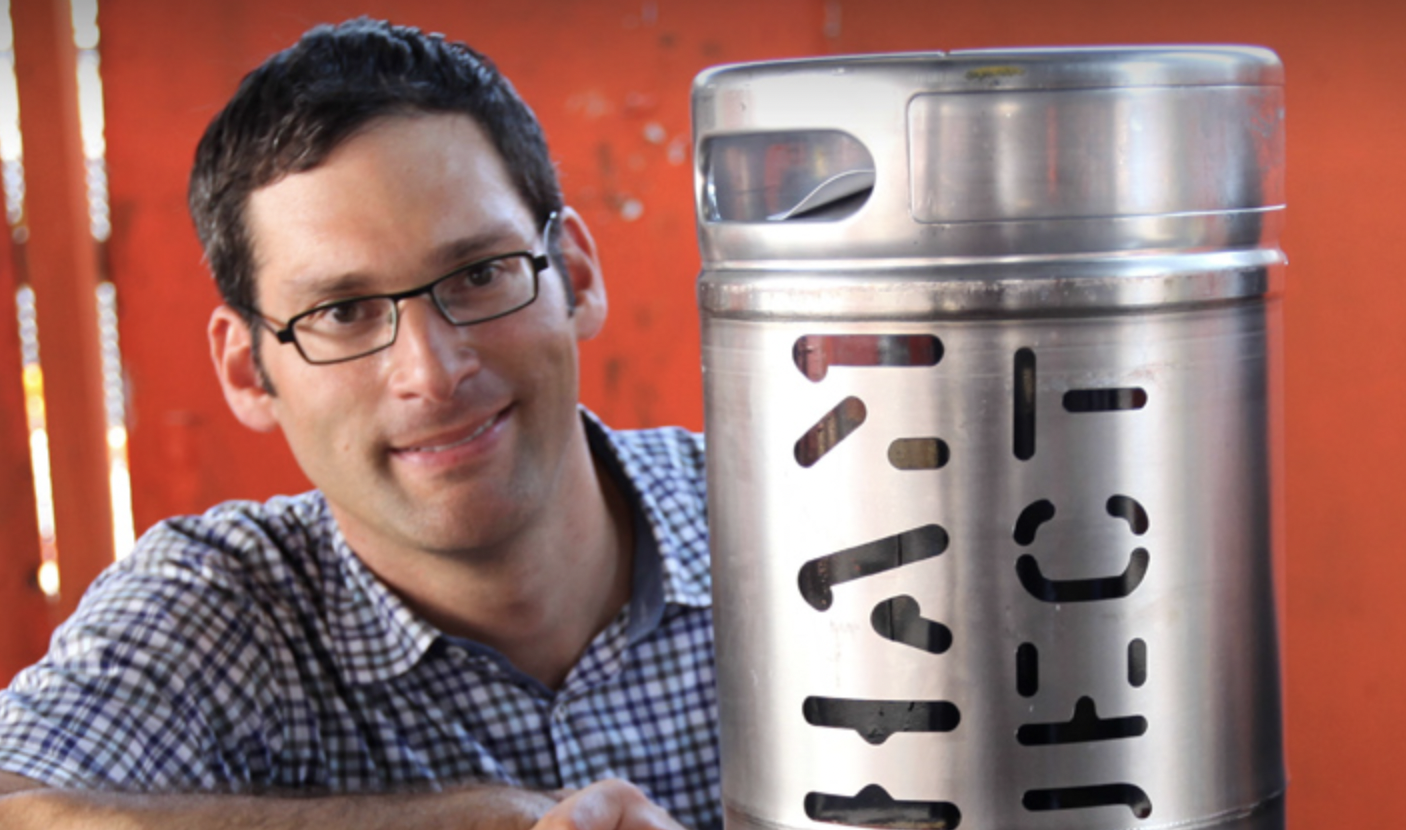 And he knew that I had been producing wine in New York and he said, "Well, can you get us some kick-ass Finger Lakes Riesling? And I've got a friend in California. He knows how to do some kegging by hand and we could learn." And so, we started in 2010, the first wine was a Finger Lakes Riesling. And we really didn't know what to expect. We thought there would be a lot of resistance on the part of the consumer. I think the perceptions of wine on tap were just, even beer on tap at the time, were not of quality. It was kind of before the whole craft beer revolution, which really coincided with the launch of Gotham becoming popular. So, I think that benefited us. And the other thing that benefited us was things like screw top bottles. People have come to understand that wine doesn't have to be in a glass bottle with a natural cork to be good.
And he knew that I had been producing wine in New York and he said, "Well, can you get us some kick-ass Finger Lakes Riesling? And I've got a friend in California. He knows how to do some kegging by hand and we could learn." And so, we started in 2010, the first wine was a Finger Lakes Riesling. And we really didn't know what to expect. We thought there would be a lot of resistance on the part of the consumer. I think the perceptions of wine on tap were just, even beer on tap at the time, were not of quality. It was kind of before the whole craft beer revolution, which really coincided with the launch of Gotham becoming popular. So, I think that benefited us. And the other thing that benefited us was things like screw top bottles. People have come to understand that wine doesn't have to be in a glass bottle with a natural cork to be good.
So we started out with that project in New York, our first account was Terroir Wine Bar. Paul Grieco gave us a shot and we put it on tap. And within the first six to 12 months, there was really a lot of buzz about it, and we began to develop the portfolio, and today we offer 40 different wines from around the world in keg for wine on tap. And the main value proposition from the beginning was, first of all, it's about freshness. So, we all know that there are issues with opening a bottle, and if you have a large wine by the glass selection in a restaurant that bottle may have been opened a day or two or even three days ago. And the wine does start to get compromised over time. And it might show some oxidation. So, wine on tap takes care of that because you're dispensing under inert gas.
So every glass tastes the way the winemaker wants it to. It's always fresh. And I think that's a huge advantage, but the other really big factor here is the sustainability factor. We're using stainless steel kegs that can last over 30 years plus, as long as you repair them every few years. And that eliminates the glass bottle from the equation. And most people don't realize that more than half of the carbon footprint of a bottle of wine comes from the energy it takes just to produce that one bottle. Wine bottles were really designed to be reused many times, just like we used to reuse seltzer bottles or soda bottles, but that's not the way it happens. We also have abysmal recycling rates here. So, wine on tap offers a really sustainable way to package wine and to have the wine be fresh. 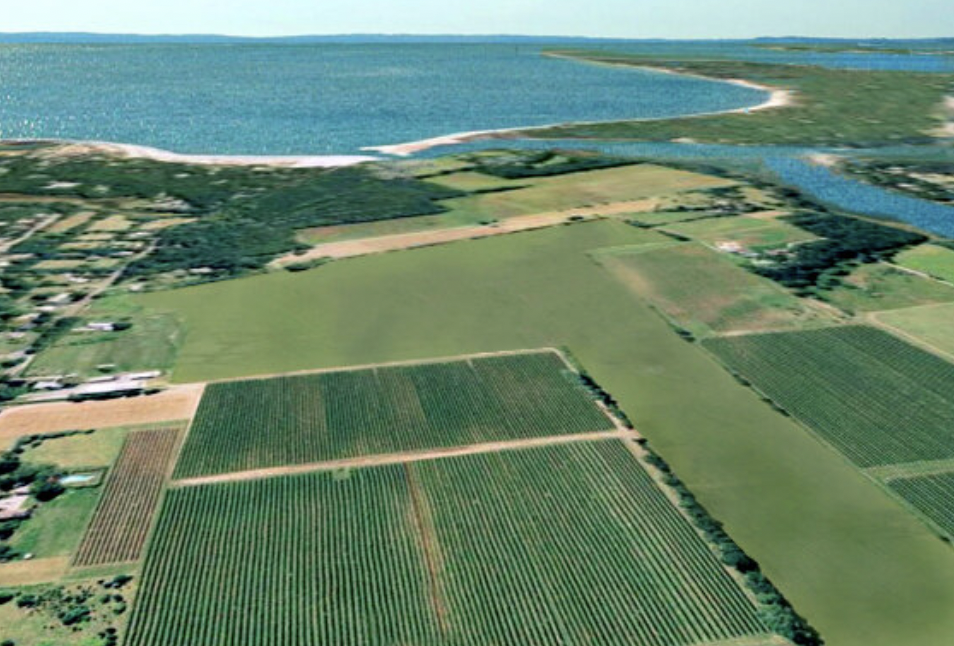 And you also work with Onabay Vineyards as a consulting winemaker, and you have Schneider and Bieler.
And you also work with Onabay Vineyards as a consulting winemaker, and you have Schneider and Bieler.
So those are outgrowths of the Schneider Vineyards Cab Franc that I was producing with my wife from 1994 through 2007.
(Onabay Vineyards on Long Island)
In 2006, a good friend of mine, Brad Anderson, I'd gone to business school with his son-in-law, he approached me and said he was thinking of planting a vineyard on his property that he had on the North Fork and asked if I would help advise him. And we talked for a couple years about doing a project and ultimately, he purchased an older vineyard that was adjacent to his property, and I helped him renovate that vineyard, it needed some work. Some of the vineyard needed to be ripped out, and then we started replanting. So, all of the clonal research I had done, I was the first one to plant many clones of Cabernet Franc in New York State. Up until about 20 years ago, the only clone you would find in New York, and for that matter in California as well, was Davis Clone One of Cabernet Franc.
It was a good clone, but not a great clone. And people are maybe more familiar with clonal diversity in Pinot Noir and Chardonnay. It really pertains to almost all varieties. And with Cab Franc, I was able to source material, six or seven different clonal selections that I first planted in 1999 on the North Fork. And then in 2006, 2007, when I started working with Onabay, we took a massal selection from the vineyard I had in Riverhead, and had those propagated and planted those in Southhold Onabay. So today in Onabay, you have the benefit of all that research we started doing and Onabay specializes in Cabernet Franc and produces two cuvees. The co-fermented, which is co-fermented with Malbec, the blend is usually 80 to 90% Cab Franc and the balance Malbec. And then Charles and I bottle the Schneider and Bieler Cabernet Franc Le Breton, which is 100% Cabernet Franc made in the Finger Lakes. The grapes come from one vineyard site on the east side of Seneca, and another vineyard site on the west side of Cayuga.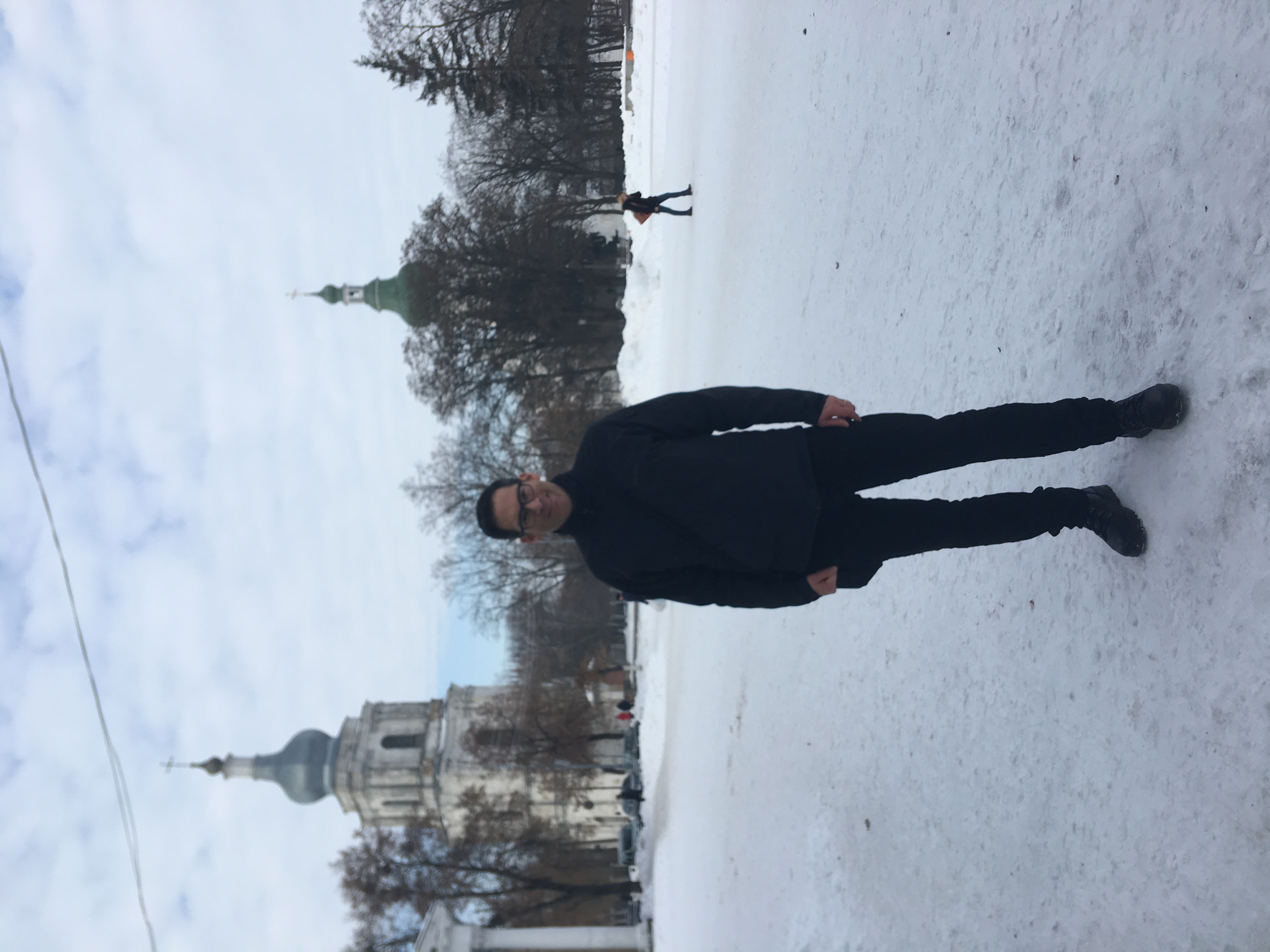
When I was in college I studied history and French. I had a chance to live in France for one semester. So, I've always loved history and culture. And at one point I thought I might go into diplomacy or something in international relations. And then as I got into wine, I realized, wine really satisfied that interest I had in understanding different cultures and history and getting to travel. And so, I've really experienced the world through wine. That's been my kind of entry point and I feel like I've been very fortunate to get to meet a lot of great people and see diverse places. And for the past 15 years, I've spent at least one or two trips a year in Germany, visiting vineyards and all along, I always wanted to visit Ukraine.
And the only thing I knew about it was that, my maternal grandfather, I remember him telling me that his family came from Ukraine and that they came from somewhere near Kiev. They weren't from Kiev proper, but it was somewhere near Kiev, but I didn't really know more than that. And for many years, that's all I knew, and in 2019, I turned 50 that year, and I just felt really compelled to go back to Ukraine or to go visit Ukraine for the first time. So, at the end of a trip to Germany, I told my wife, I said, "Look, I'm done on Friday. I'm going to take the weekend and go to Ukraine. I'll fly from Frankfurt to Kiev and just at least get to see something."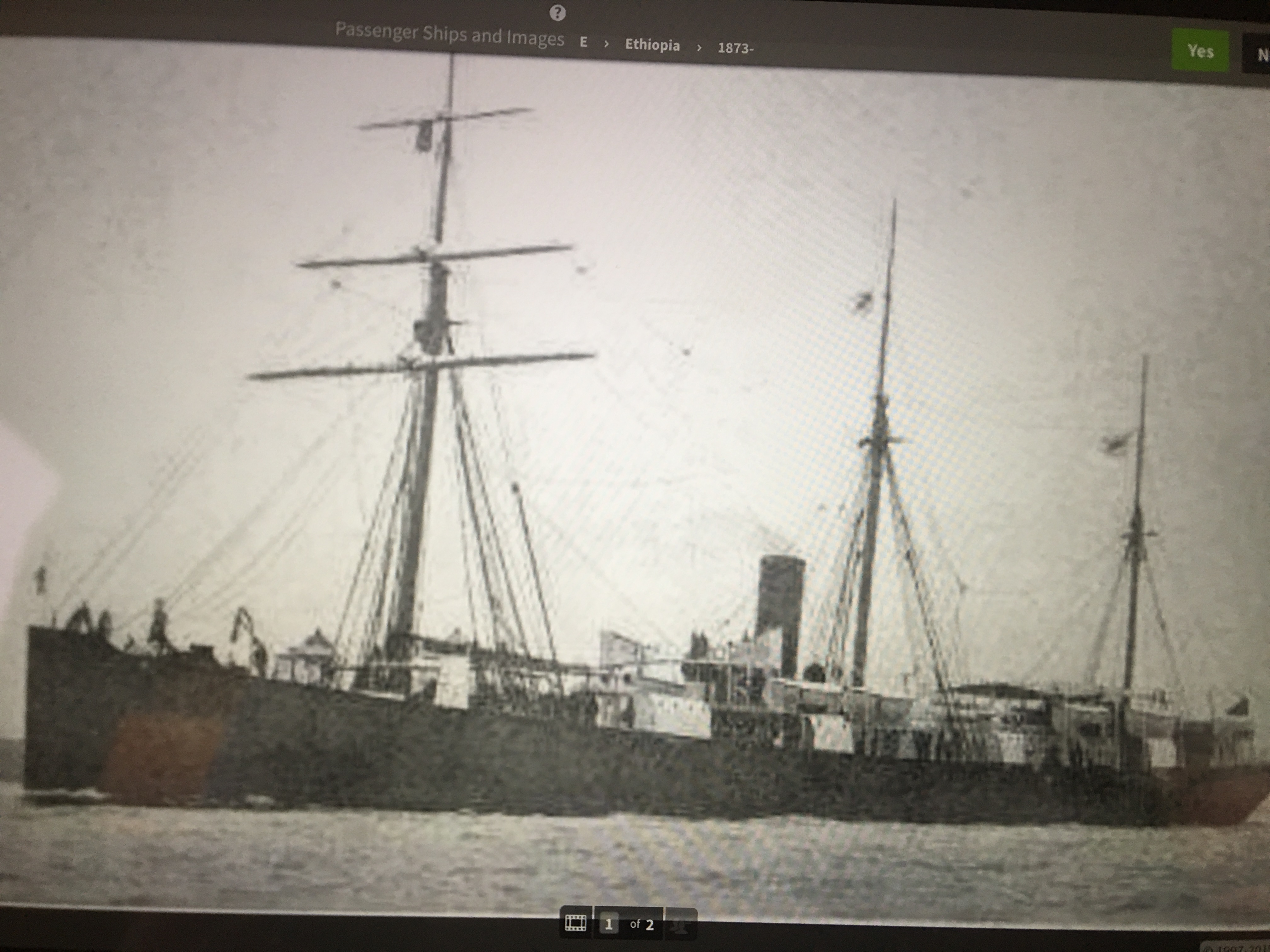
(The ship on which Bruce's grandfather arrived in America)
And my family, like a lot of other Jewish families that had roots in Eastern Europe, had very similar stories. So, I got someone as a guide who was familiar with the history of the Jewish community in Ukraine, and we planned to meet in Kiev. She was going to pick me up at my hotel. I arrived in the morning. We were going to spend a whole day visiting these sites of interests to the Jewish community in Kiev.
And a few days before I went, I was just doing research on Google and Wikipedia online. And I was basically searching for the history of the Jewish community in Ukraine or in and around Kiev. And somehow, I got to some documents on ancestry.com and I found through ancestry.com the naturalization papers for my grandfather on when he became a US citizen. So, he came over in 1903 and he didn't become a US citizen until the early 1940s. So, I found this document through an ancestry.com database and on it said, "Born in Pereiaslav, Russia." So, I started to do some research and I found Pereiaslav, and Pereiaslav is about a hundred kilometers south of Kiev.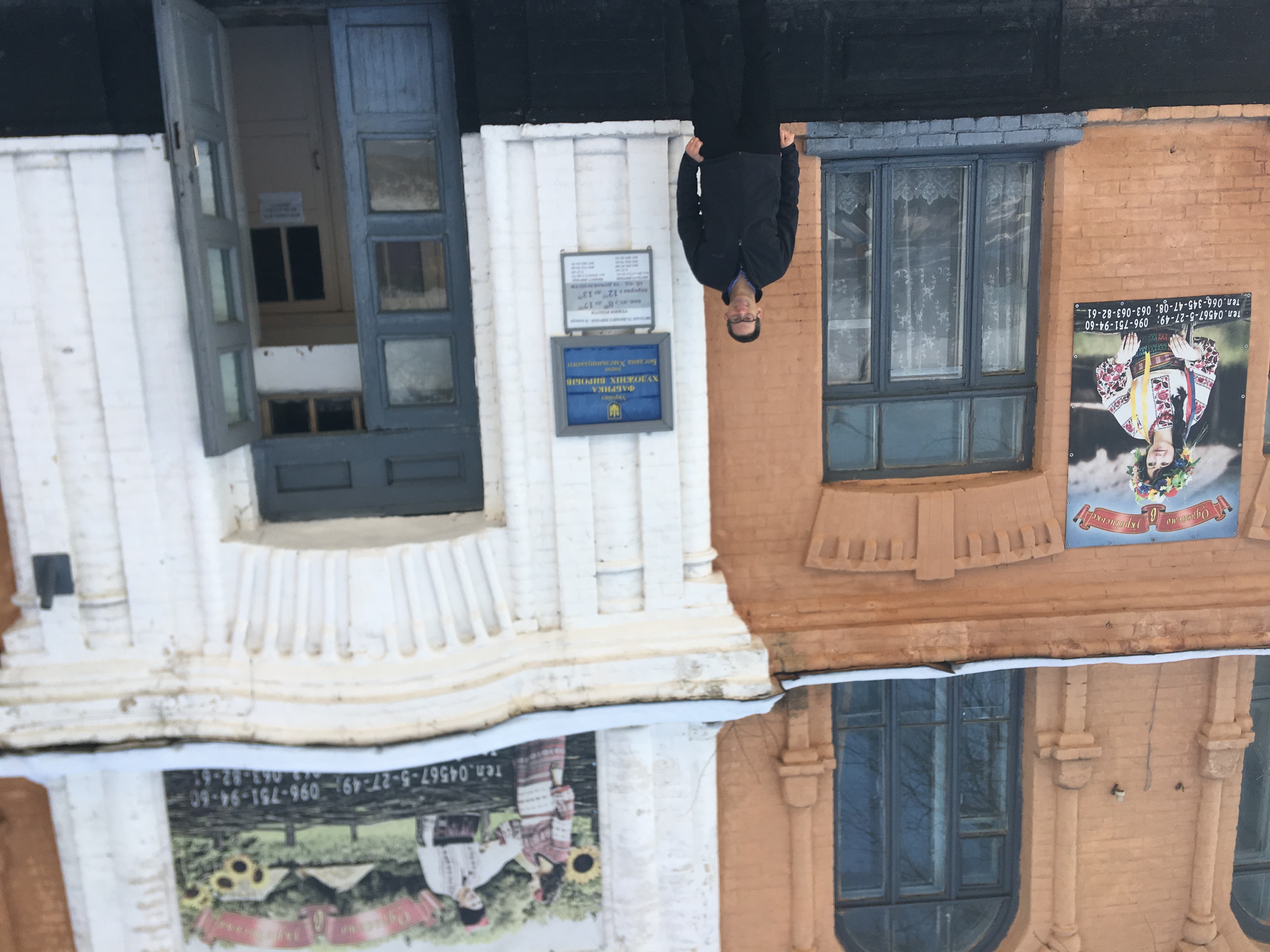
(The textile factory which used to be the synagogue, probably attended by Bruce's grandparents)
I'm like, "Okay." She's like, "No, we'll get a driver." And, and the cost of this driver and guide were a fraction of what you would expect to spend here. And so, we set this up and we did this over the two days, and it ended up being an incredible experience. And I guess after visiting Pereiaslav, we got to see the building that was the synagogue in Pereiaslav from 1901 to 1926. At this point now, it's a small textile factory. So, I was able to actually go in and see the looms, and I bought a tablecloth there. And they still have on the weekends this small museum of Jewish history in the building. So, it was very interesting.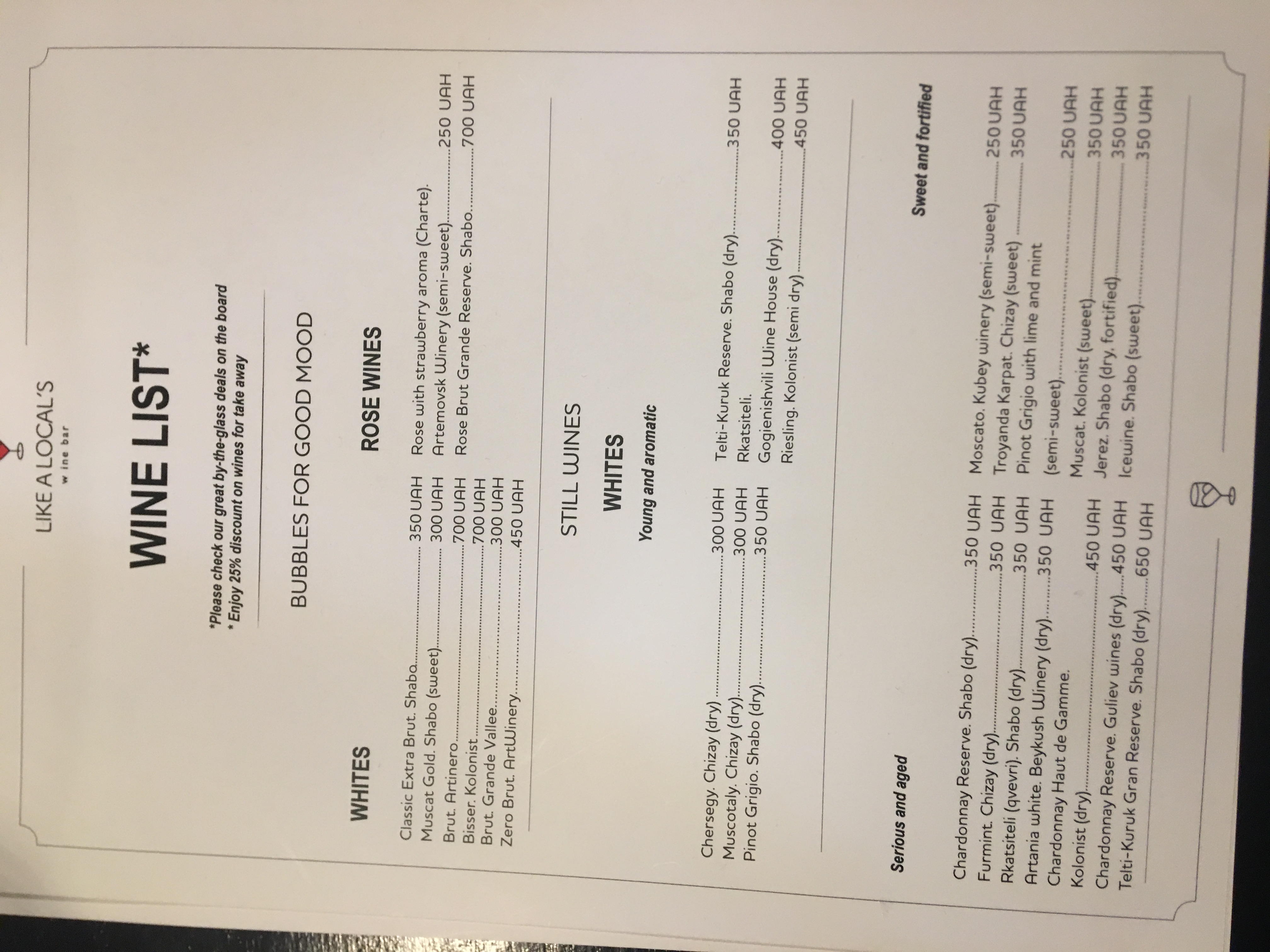
So I started to get interested and do a little research and mainly it was just primary research, just sitting down. And it was interesting because they only offered five or six wines by the glass. And I'm like, "I've got to try at least 12 or 15 of these." There was Furmint, this and that. So, I was buying bottles, and bottles on the list were $10 a piece. So, I made a lot of friends that night. I ended up buying several bottles and sharing them with folks in the restaurant.
But through that, I spoke to one of the sommeliers in the wine bar and I gave her my card and I didn't think much more about it after I left, but about three weeks later after I got home, I got an email from this guy, Sergiy. And he said, "Hi, I'm Sergiy. I'm one of the founders of Like a Locals Wine Bar. I got your card. I think it's really cool what you're doing with Gotham Project. I'm going to be in New York in two weeks. I'm going to vacation in Mexico with my fiancé. Could we meet up?" And I was like, "Fantastic. Absolutely". So, we met up for lunch when he was here in New York and we became friendly. And that's how, I guess, the roots of this project started, the Elijah's Fifth Cup.
Bruce, the Ukraine has this fabulous wine history that's sort of been interrupted by the Soviet period and then started to come back again with the creation of the Ukrainian state. Talk a little bit about the history of wine production in the Ukraine.
So what I learned is that, wine has been made in the Ukraine since the 13th century. So, it's a very old wine producing country and the most famous vineyards are in Crimea, and we all know what's happened there. So those are contested vineyards at this point. Most of the vineyards in Ukraine are in the south and in the western part of the country. There are a few small ones popping up outside of Kiev, but most of them are in the south on the Black Sea, near Odessa. And then also in the west, towards the border with Hungary.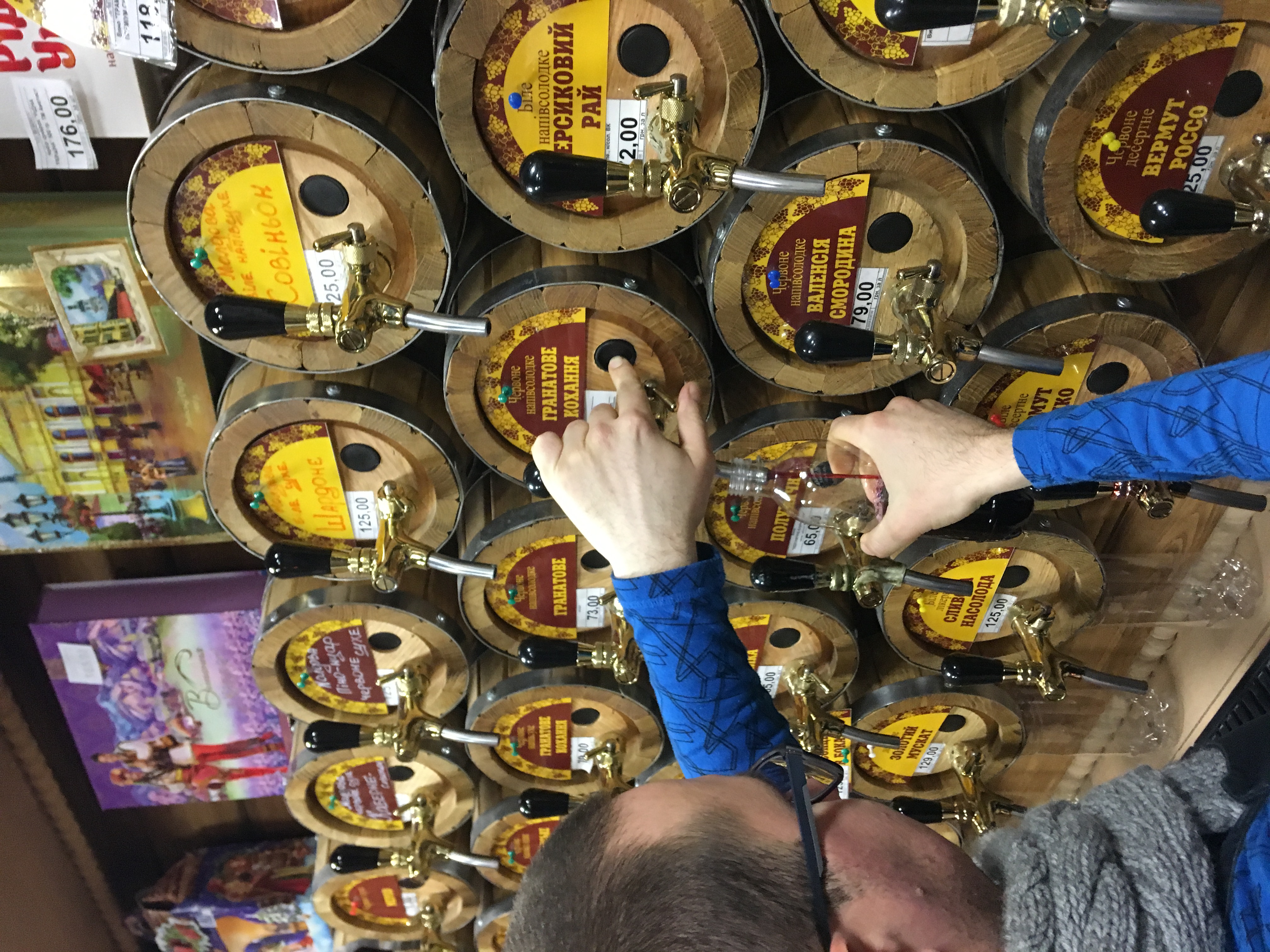
(Wine on keg in the Ukraine)
And there's one thing I learned when I was in Ukraine, that is really a limiting factor. And some of the top producers are banding together to try to lobby to change this, but one of the issues was that private citizens can't own the underlying land that the vineyards are on. So, they're forced to take out long-term leases on the land. So that makes it very hard for an individual entrepreneur to be willing to invest in all of the planting of a vineyard and managing a vineyard when you know that you're not going to own it at the end of the day. So that is a definitely a stumbling block and a limiting factor that people that care about the industry, including Serge at Like a Locals Wine Bar, they're working hard to try to change that.
One of the wines that I had at Like a Locals Wine Bar was from Chateau Chizay. And Chateau Chizay is in the western part of Ukraine in the Transcarpathian mountain range area that goes right up to the Hungarian border. Really that terroir is split between Western Ukraine and Hungary. The wines I tasted that night were from Furmint and also Muscotaly, which is a Muscat hybrid.
And the wines were very interesting, very tasty, I enjoyed them very much. So Sergiy introduced me to the owners of Chateau Chizay, and I approached them about two and a half years ago. It was maybe a year after I got back. And we started talking about this Elijah's Fifth Cup project. And I think when I got back from Ukraine, I wanted to do something to continue that connection and sort of to honor my grandparents and my ancestry. So that's how the Elijah's Fifth Cup project got started. And we started with a Cabernet Sauvignon from them, that comes from three different vineyard sites in the Transcarpathian mountain region near Chateau Chizay.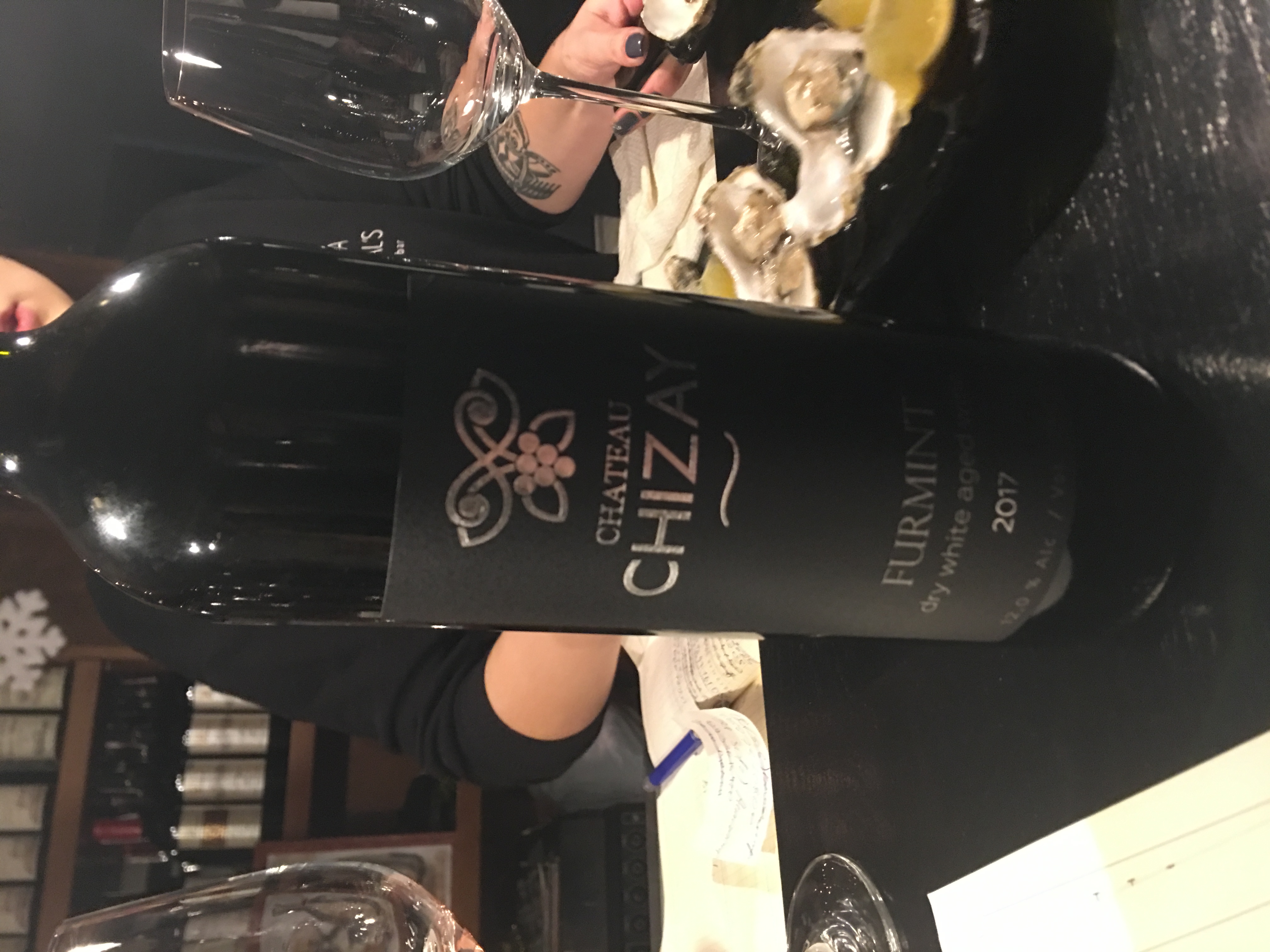
So there are volcanic soils. They have big day night temperature swings which are very good for retaining acidity. There are mountain and hillside vineyards. You have a lot of great conditions for making wine there. The main red varieties they're growing are Cabernet, Merlot and Pinot Noir. They do sparkling wine, traditional method from Pinot and some Chardonnay. In the whites, they do Furmint, Sauvignon Blanc, Muscotali. They also do a Muscat and Chersegi, which is a grape that's popular within the region that I believe is a hybrid. So those are some of the main grape varieties. And I think Furmint is really interesting because obviously it's so important across the border in Hungary and the examples I've tasted so far, I think, show a lot of potential.
How big is the Ukrainian wine industry?
Last I looked Sergiy had some very good information on this. There are maximum 50 different companies producing wine. Some of them are tiny, tiny, tiny, producing a few hundred bottles at this point. So, it's a tiny industry. Chateau Chizay is one of the largest. They are growing. They have 270 hectares planted. So that's a sizeable project. Their production is split between kosher wine and non-kosher. They do export to the US, so you can find the Chateau Chizay wines in the US, both their kosher and non-kosher. The kosher wines are kosher for Passover and mevushal. And that's what the Elijah's Fifth Cup is.
One funny story is when I started the Elijah's Fifth Cup project, I went to get the kosher certification and they sent me paperwork and they said, "Well, you have to pay, you have to join the, not-for-profit, the association that organizes the certification." And they sent me the paperwork. And the headquarters of this organization was in Crown Heights about a half mile from where I live in Brooklyn. So, I thought that was pretty funny. We produced 400 cases of the first vintage. It was the 2019. The wine has really pretty red fruit, a little bit of spice. The wine's very accessible. The wine retails for $12, $13 a bottle. I think it offers tremendous value. We're hoping, God willing, that we'll be able to produce some wine from the 2022 or 2023 vintage.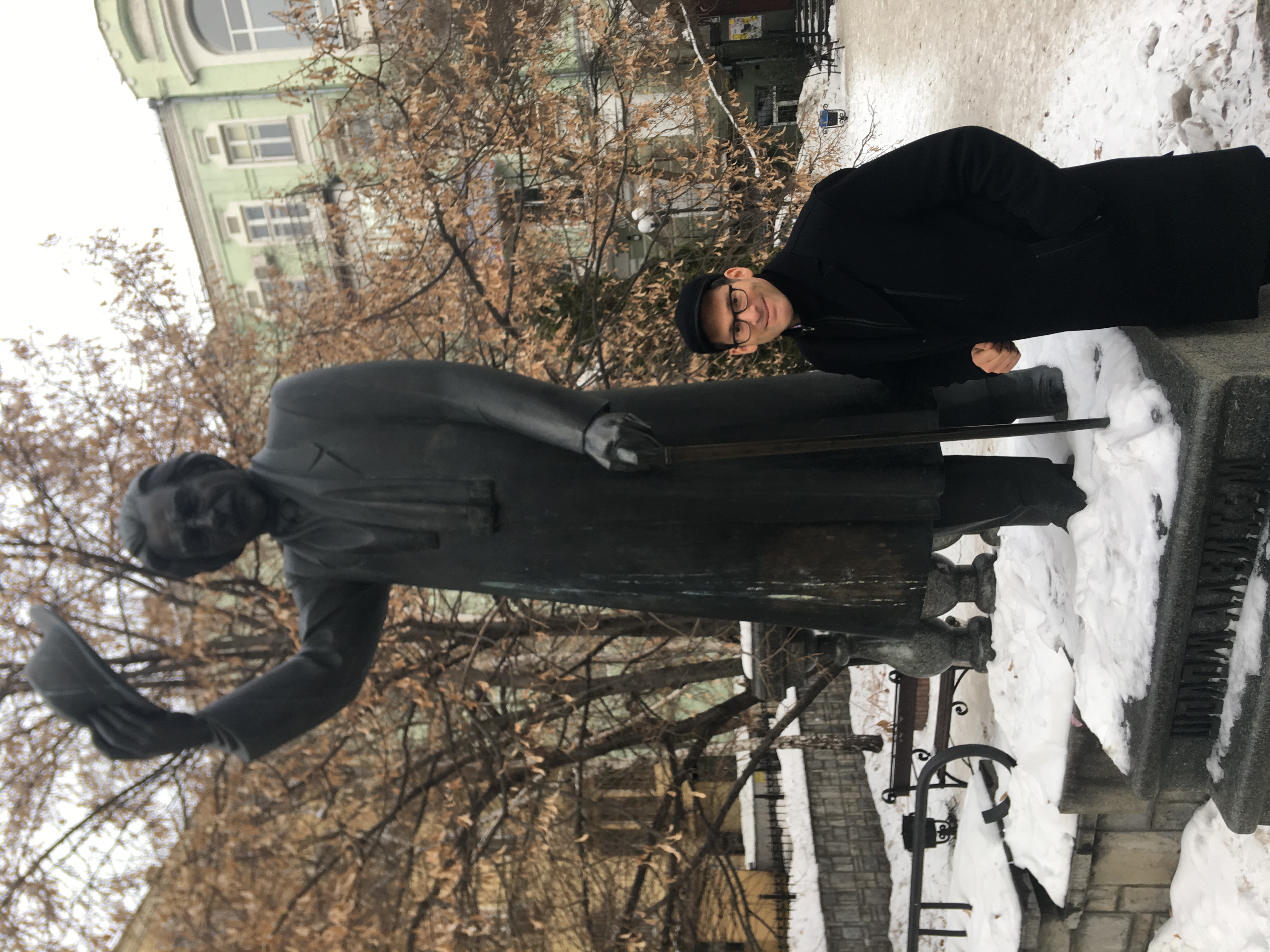
Yes, definitely. I reached out to Ilan Radom, the vice president at Chateau Chizay who heads up their exports and to Serge right away just to make sure they were okay. And thankfully they are okay.
(Bruce with a statue of Sholem Aleichem, a Yiddish author and playwright, who was born in Pereiaslav. The 1964 musical Fiddler on the Roof was based on his stories about Tevye the Dairyman.)
The situation in Western Ukraine is dire with all the refugees flooding into the region. So, Ilan told me that. So, there's been a ban on alcohol consumptions since the start of the war. They did relax that, they're now allowing wine and beer in Western Ukraine near where the winery is. He said that he did hear of several wineries in the south being totally destroyed, others being robbed. And, so it's really bad in the south. In the west, he said, they've been a little more fortunate. They've been able to take care of their people. They've been able to continue farming the vineyards, but of course they rely so much on exports and also domestic sales. So, he just said, they don't know how long they can keep going if the war keeps up.
So it's really a horrible situation. He did tell me about a GoFundMe campaign that the winery is doing because they're providing shelter and food and logistics for hundreds of refugees. So, I'll share that with you, and if we could share that with the audience, that would be great, but like everyone, I'm kind of watching in horror as we see what goes on and just really pulling for people in solidarity. It's amazing what the people of the country have done to pull together. And it's a horrible, horrible thing.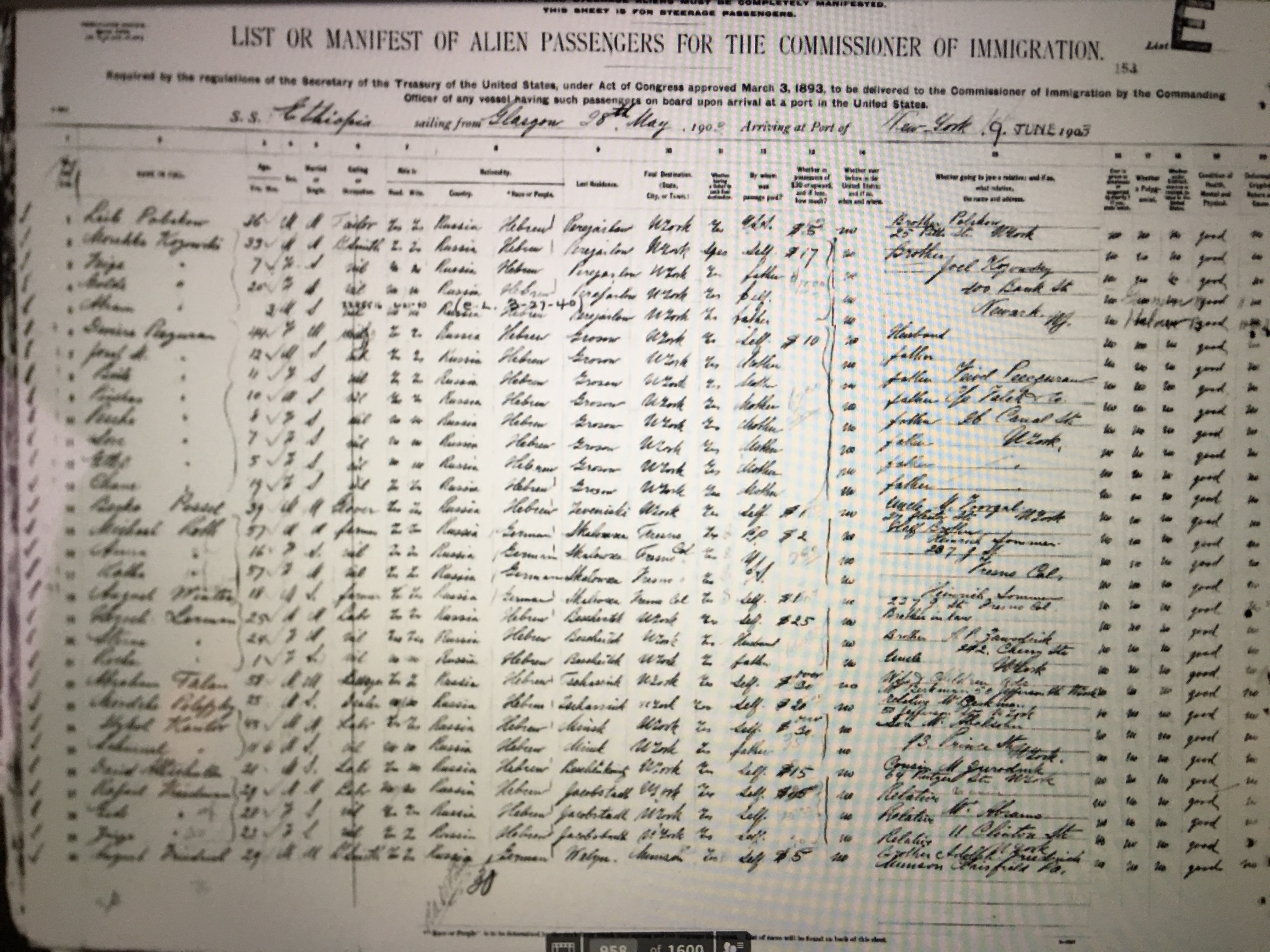
I remembered some of the fondest memories that I had of my grandparents, who came from Ukraine, were Passover Seders.
(The manifest from the ship where Bruce's grandfather arrived to the United States showing an age at boarding of two months)
If I think back to family get togethers and family holidays, those were some of the most joyous. Wine is always a central part of the Seder. During the Seder you have four cups of wine. There's also a tradition of placing a cup of wine on the table for Elijah. And Elijah really represents the stranger that you're supposed to invite into the home and to care for those who are in need. So that fifth cup is Elijah's cup, and it was just something that I thought was a fun way to pay tribute to my grandparents and to those wonderful Passover Seders.
Bruce, when you found the papers from ancestry.com, you realized that your grandfather was only two months old by the time he got to the United States?
Yes. It was unbelievable. I had no idea. I thought he had come over when he was a few years old, but with those papers, I was actually able to find the ship's manifest that they came over through Ellis Island. So that ship's manifest had his name, the name of his mother and father and siblings. And it said, "Age at arrival, two months old."
They came through Glasgow, Scotland, which means he was either born minutes before they whisked him out of Pereiaslav or was born on route here. So that was a really incredible part of the story to learn. And he can only imagine, and it makes me think about what's going on today, some of the research I did from 1903 to 1906, it was a high period of Pogroms within that area. So they were fleeing for their lives. Really. And so just really understanding in a much more detailed way, what his beginning in this world was like was really incredible to learn.
Editor's Note: Like Bruce, my maternal grandfather was born in Ukraine. He was a New York City firefighter who I used to visit on holidays at his apartment in Parkchester in the Bronx. Due to the Cold War, my grandfather lost contact with his relatives in Ukraine. I have often felt the desire to visit Ukraine and almost did two years ago but eventually had to cancel the trip. Bruce's journey to connect to his ancestry is something that is very American, a country where many of us have ties to foreign lands that go back only one or two generations. Many of us share connections either directly or indirectly with Ukraine and its people who are experiencing the daily terror of living amongst war. In closing I share again the link to the GoFundMe page created by Hugo Gutman, the founder of Chateau Chizay. https://gofund.me/a241bcc0














